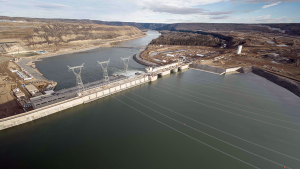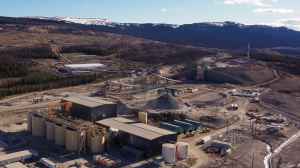When a new provincial or territorial government is elected in Canada, the changing of the political guard often means a move from one side of the left/right political continuum to the other.
When that happens, it often affects that jurisdiction’s construction industry, including the balance of employer-labour interests and how the government mediates that relationship.
Consider Western Canada over the last few years.
In Manitoba, the Progressive Conservative Party was elected in 2016, ending nearly 17 years of NDP rule.
Since then it has been putting its stamp on government-business relationships in the province.
For example, the government eliminated the Minister’s Advisory Council on Workplace Safety and Health as part of an initiative to streamline government operations.
The council, which included employer and labour representatives, was required to review Manitoba’s Workplace Safety and Health Act every five years, and to report its findings and recommendations to the minister.
Council members from both the employer and labour sides were disappointed that the committee was being disbanded.
“It was a particularly effective way of conducting meaningful consultation between government and stakeholders,” said William Gardner, chairman of the Manitoba Employers Council. “It was a representative body.”
Blaine Duncan, who works for the Manitoba Government and General Employees’ Union, called dissolving the board as a standing committee a “detriment” to the process of updating health and safety legislation.
At about the same time as the workplace in Manitoba was taking a turn to the right, in Alberta, where the NDP had replaced the Progressive Conservatives, it was moving to the left.
The Alberta government introduced changes to provincial labour law, saying they would support injured workers better and modernize workplace health and safety rules.
Amendments to the Occupational Health and Safety (OHS) Act included enshrining the right for employees to refuse dangerous work, creating worksite health and safety committees and expanding rules to prevent workplace violence and harassment.
The changes outlined in Bill 30, An Act to Protect the Health and Well-being of Working Albertans, are the result of the first comprehensive government review of the OHS act since 1976. The changes are slated to come into effect on June 1, 2018.
In British Columbia, the 2017 election of the NDP has made independent safety consultant Jeff Lyth of QSP Health and Leadership Consulting concerned “the same old tug of war between employers and labour” on workplace safety could be perpetuated.
“There’s a recurring history in B.C. of employer-worker conflict in health and safety,” Lyth said.
“Recent changes in the composition of the WorkSafeBC board, following last year’s election, is a reflection of that old, unproductive pattern. At the same time, the board has a golden opportunity to update the safety paradigm to one that focuses on positive outcomes, not culpability.”
Lyth said an inherent feature of conventional safety-at-work thinking until now has been the temptation to “pass the buck” and push fault down the work hierarchy.
“These issues have been magnified in B.C. due to partisan politics and that has affected the way the board has operated,” Lyth said.
Philip Hochstein, who was president of the Independent Contractors and Businesses Association of B.C. from the 1980s until recently, has seen many B.C. governments come and go.
“Every new government, every new premier, brings with them a unique agenda,” said Hochstein. “Everyone sees the province’s interests and its challenges differently. What makes this government unique is the influence of the Green Party on the NDP.”
Because labour and employment matters are important to the NDP, the province should expect some changes from the way the former Liberal government approached them, Hochstein said.
“Numerous committees full of hand-picked stakeholders will be set up and recommendations consistent with government’s philosophy will be made in order to legitimize the changes,” he said.
The NDP government will want, for example, more benefits for workers and easier terms for qualifying for benefits, Hochstein said.
“Expect more enforcement by WorkSafeBC and more inspectors and therefore higher costs, which employers will have to pay,” he said. “But the industry is already doing a good job on workplace safety, so don’t anticipate any major reductions in deaths and injuries.”
Hochstein said the government has an ambitious agenda and NDP and Green supporters have a pent up demand for policy changes.
“This year will be a busy year for public policy,” he said. “It’s the government’s big window of opportunity.”











Recent Comments
comments for this post are closed